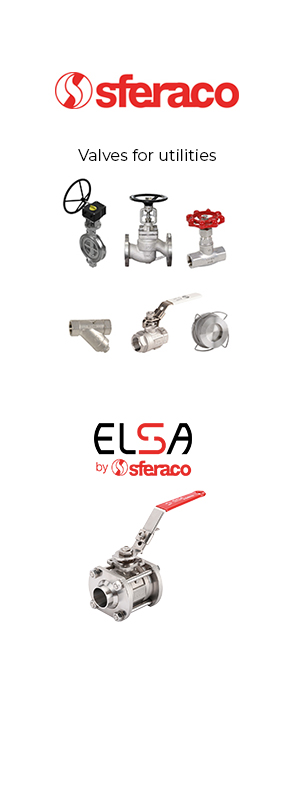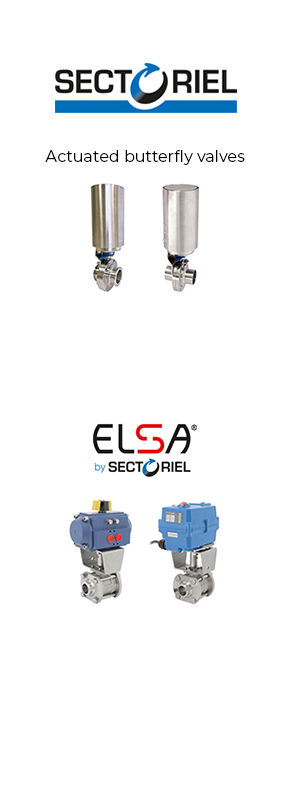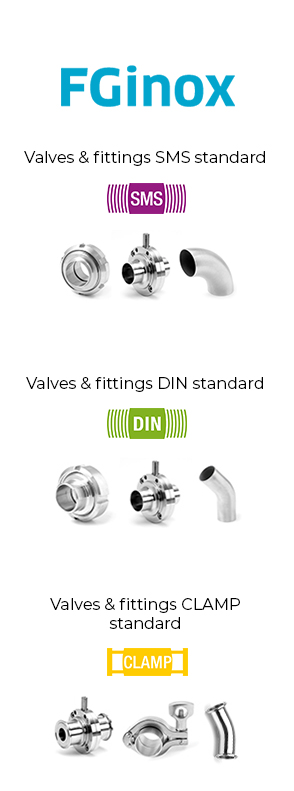Local Storage seems to be disabled in your browser.
For the best experience on our site, be sure to turn on Local Storage in your browser.
FOOD INDUSTRY
The food and beverage industry has specific requirements and strict hygienic standards.
Valves must be designed and manufactured very carefully to avoid any microbial contamination. The material used in these valves should be nontoxic, inert or non-reactive to the fluid and the cleaning substances. These valves must be resistant to corrosion.
In the food industry, valves are regulated by various government agencies and standards organisations, depending on the country and region. In the EU, all valves and fittings must comply with the EU Regulation (CE) No 1935/2004. In the United States, the federal agency Food and Drug Administration (FDA) regulates valves used in food production under the Federal Food, Drug, and Cosmetic Act. In our catalogue, you can find these icons next to the concerned products.
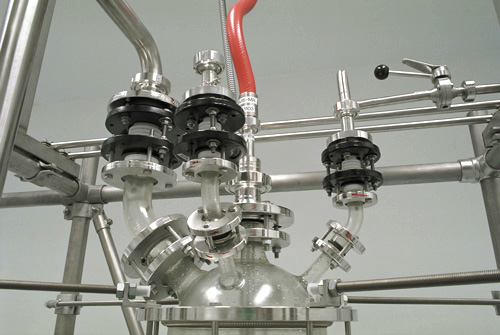

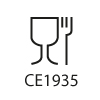

Equipments used in the food industry must comply with European Regulation No. 1935/2004. It defines the requirements that apply to materials and objects intended to come into direct or indirect contact with food and groceries in the European market. Between the requirements of EC 1935/2004, traceability is an important point. Manufacturers draw up a Declaration of Conformity to the EC 1935/2004 regulation delivered with the material and affix the CE marking on the product.
WARNING: it does not apply to drinking water distribution networks.
To check the directive in detail.
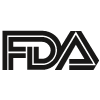

The other reference standard in the food industry is the American Food and Drug Administration (FDA) regulations. It establishes a positive list of substances and materials authorised to come into contact with food. Valve manufacturers can publish a self-declaration that reflects the compatibility of product materials with the food application.
WARNING: the FDA refers to the materials but not to the whole product.
You can check FDA regulations in detail.
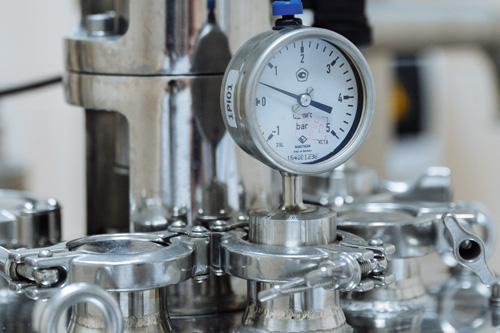

We can distinguish four main application groups.
- Ingredients in direct contact with food such as: raw materials food gases additives (flavor enhancers, preservatives), water as an ingredient, other ingredients.
- Utilities in indirect contact with food such as: cleaning water, steam sterilization of lines, cleaning agent.
- Production, transformation processes: steam lines, beverage, gasification, scraping, station sampling, conservation procedures, distribution line, liquid gas, freezing, drying line.
- Transport & packaging of the finished product: tanks, piping, bottling line, etc.
The food and beverage industry includes a wide range of product categories, such as milk and dairy, baked goods, among others. As a result, there is an extensive range of fluids that must be processed, making it crucial to have a clear understanding of the equipment required for media processing. Valves play an important role in all food and beverage processing plants, and the selection of a suitable valve depends on the nature of the food and beverage material being processed.
Additionally, other factors such as temperature, pressure, viscosity, and the type of elements that the valves will encounter must also be considered.
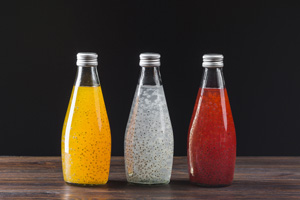

Image by Freepik
Our products are primarily used in utility applications in indirect contact.
The SMS, DIN, and CLAMP fittings of FG Inox can be used in direct contact with food.
SMS (Swedish Metric Standard) connections are often used for dairy products, such as milk, cheese, and yoghurt, as well as for beer and other beverages that require aseptic processing. SMS fittings are designed to be easily cleaned and sterilized, and they provide a secure, leak-free connection between pipes and other components in the processing system. This standard is mainly used in France, the United Kingdom, Spain and the Maghreb.
DIN (Deutsches Institut für Normung) connections may be used for a variety of applications, depending on the specific requirements and standards of the industry. DIN fittings are used in various food and beverage applications where compatibility, interchangeability, and reliability are important. DIN standard is rather used in German-speaking countries and in Italy.
CLAMP connections are commonly used for applications that require secure, leak-free connections between pipes, hoses, and other components. They are popular in the food and beverage industry due to their ease of use, reliability, and compatibility with a wide range of materials and applications. CLAMP connections are used in a wide range of food and beverage applications where a secure, leak-free connection is essential to maintain product quality, safety, and hygiene. This standard is used when the production line must be disassembled often.

